Arctic disappeared in nuclear tests. “Dukata” shows the northern works of Ada Rybachuk and Volodymyr Melnichenko – Publications
[ad_1]
Ada Rybachuk and Volodymyr Melnychenko – or ARVM, as they signed their joint works – did a lot for art to help remember. In their completion, the memorial complex “Bykivnyansky graves” on the capital’s Brovarsky prospect, the “Wall of Memory” on Baikova Hill, the project of the monument “Children-Heroes” on Glory Square in Kyiv.
As students in 1954, Ada and Volodymyr travel to the Arctic, get acquainted with polar landscapes, the lifestyle and beliefs of the Nenets, the people who live there. They create a series of works that reveal the Arctic as an environment of incredible nature and culture, as well as a place affected by Soviet nuclear tests in the 1950s.
Ada Rybachuk and Volodymyr Melnychenko shortly before the defense of theses. Kyiv. 1957 year
archive-uu.com
The “Stone-Wood-Paper” exhibition with works of the “Northern Cycle” by Ada Rybachuk and Volodymyr Melnychenko was opened in the “Dukat” gallery. UP. Culture recommends watching them until March 13.
From the cool February street, the space of “Dukatu” envelops you in warmth. The light of the gallery, the colors of the works at the exhibition, and the intimacy of the place separate visitors from everything outside and seem to transport them to the workshop of Ada Rybachuk and Volodymyr Melnychenko. The exhibition welcomes a joint photo of the artists, where they diligently study and discuss the papers at the table.
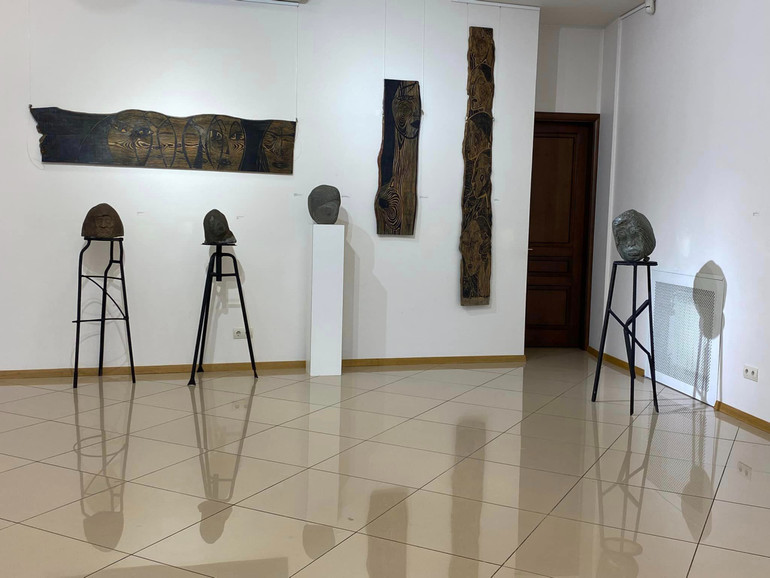
DUCAT Art Foundation / Facebook
The artists created the works presented in “Dukata” on the island of Kolguiev. In the 1950s, it became one of the locations affected by radiation damage. During 35 years, the Soviet authorities carried out 132 explosions on the Arctic archipelago of Novaya Zemlya, the power of which was 94% of the power of all nuclear tests on the territory of the USSR. This also affects Kolguiev: animals disappear here, the ecosystem is destroyed, and people get sick.
Ada and Volodymyr had several trips to the Arctic: the first – in 1954, and the longest – from 1957 to 1959. These journeys, which initially arose out of interest in another culture, later turned into full-fledged studies.
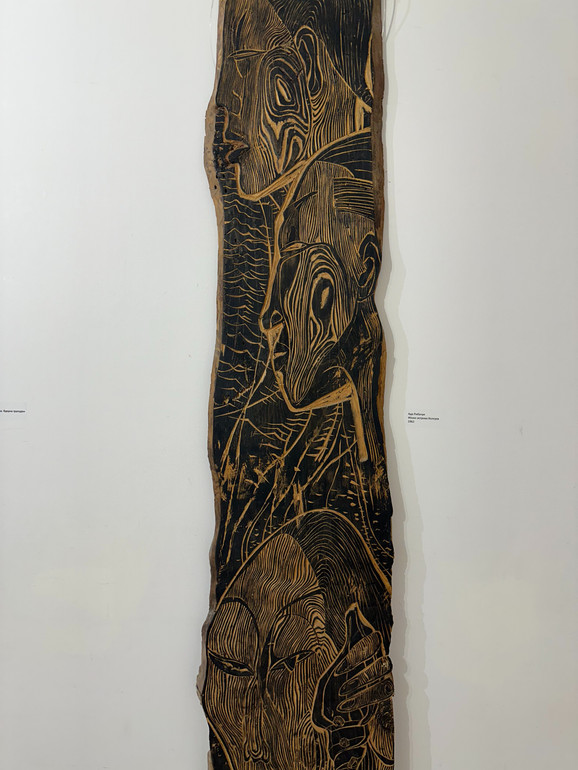
Olga Dudenko
Their influence has a direct impact not only on the work of the ARVM, but also on the life of the Nenets: Ada and Volodymyr paint together with their children on the island of Kolguiev, and they donate 118 works to the city of Naryan-Mar, which will later form the basis of the first art museum in the Arctic.
“Stone-wood-paper” are the materials from which the works at the exhibition were created. They are placed in such a way that they resemble a space where you can honor someone, remember or pray. In the initial description of the exhibition, the organizers also refer to the beliefs of the Nenets: the latter believed that the spirits of ancestors and unborn descendants are preserved in objects of the environment.
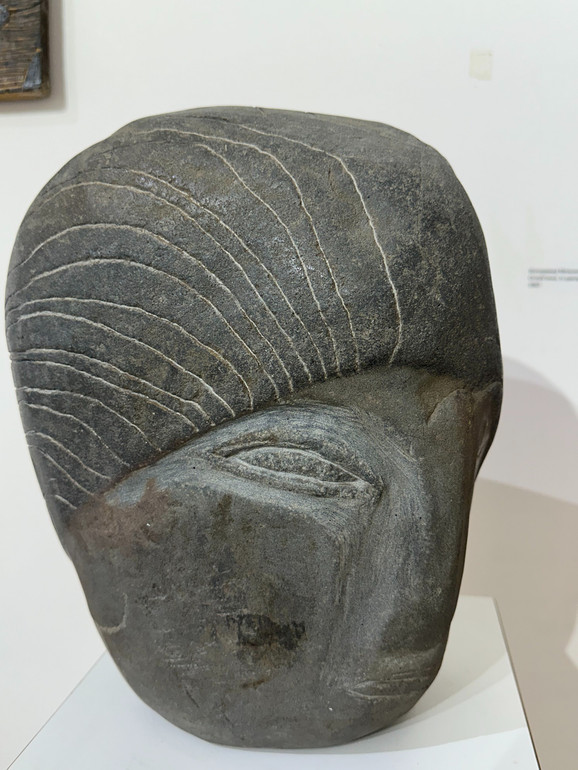
Olga Dudenko
The stone sculptures of Volodymyr Melnichenko are most reminiscent of totemic objects. When you are near them, you involuntarily remember the pagan Zbruecki idol or the story temple sculptures in India. Volodymyr creates stone heads of the Nenets – these are monumental images of people who live on the island of Kolguiev. One of them is “Eki”, which means “boy” in Nenets; another is the hunter’s face.
Ada Rybachuk’s woodcuts are also characterized by plot. Several of her works are entitled “The Sun” (1962). On one of them, a smaller Nenets man sits behind the wheel, while an adult supports his neck. The life and everyday life of the Nenets unfolds on a different level – they walk in the snow, greet each other, consult on the economy.
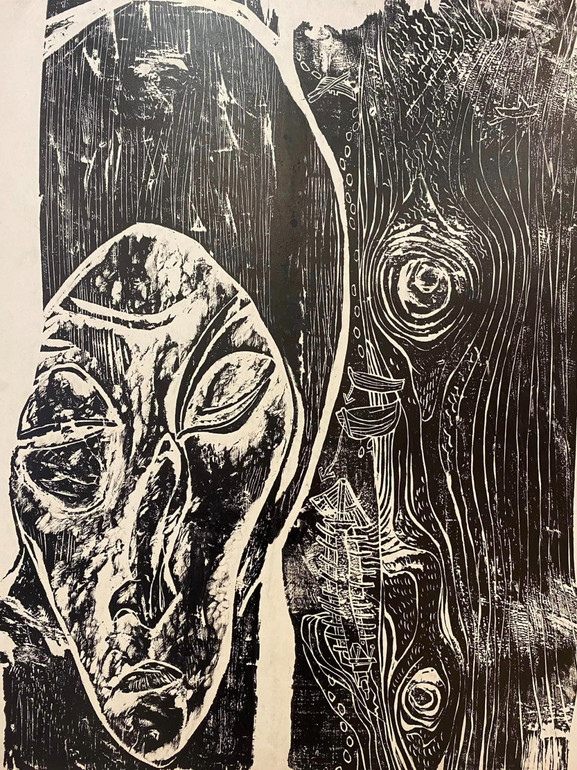
DUCAT Art Foundation / Facebook
Above them is a huge sun. It seems that all the inhabitants of the island know each other and are connected in some way. For them, mutual support, united work and interpersonal relations become the cornerstone of their existence. Coexistence.
There is a lot of tragedy in Ada’s works because of the nuclear threat. She calls one of her cycles “Hiroshima. A nuclear tragedy”, personalizing the catastrophe, because she depicts human faces on a tree. Most of them with closed eyes, in sorrow and thought.
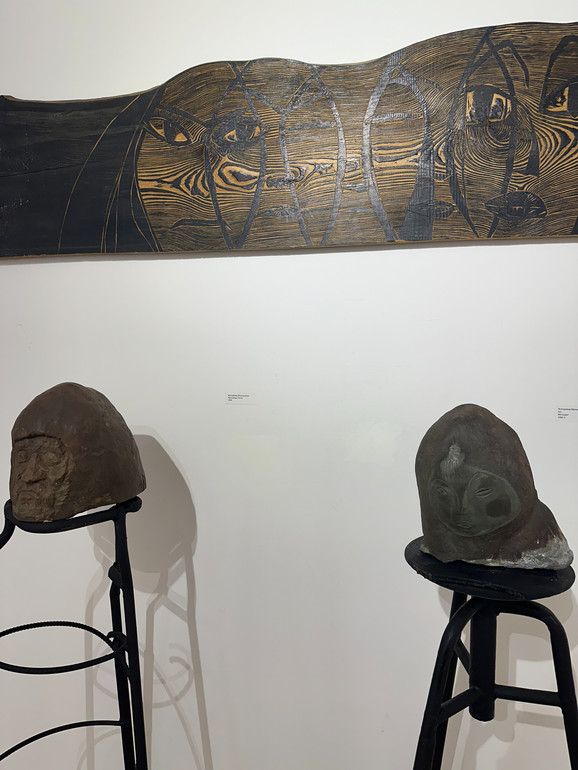
Olga Dudenko
The works of Volodymyr and Ada are primarily about the Nenets people. Life, nature, clothes, hats recede into the background. On the woodcut “Four Nenets” Ada Rybachuk depicts four faces of the inhabitants of the island – they are usually oval, with sharp features, the corners of the lips are lowered. Ada devotes a significant role in her works to female figures: she has the cycles “Seven Women from the Seven Plagues and the President of the Island Mira Ivanivna” (1962-1963) and “Women of the Kolguiev Island” (1963).
On the woodcut “Women of Kolguiev Island” (1962), Ada places five female faces, vertically, one after the other. It is clear that the artist likes to work with their textures, and for her this is one of the ways to touch the identity of the Nenets, their culture.

Olga Dudenko
Among all the works, the huge painting “Children”, which depicts six Nenets children, attracts the most attention. It is as if they were stopped in the middle of the street, and they, jumped by the company of artists, pose in warm massive clothes.
The works of Ada Rybachuk and Volodymyr Melnichenko make it possible to record the Nenets culture in time precisely through its bearers. Ksenia Kravtsova, head of the board of the ARVM foundation, says that artists always wanted their workshop and creativity to belong to Kyivans, so that people would come to visit them. Time to accept this invitation.
[ad_2]
Original Source Link











